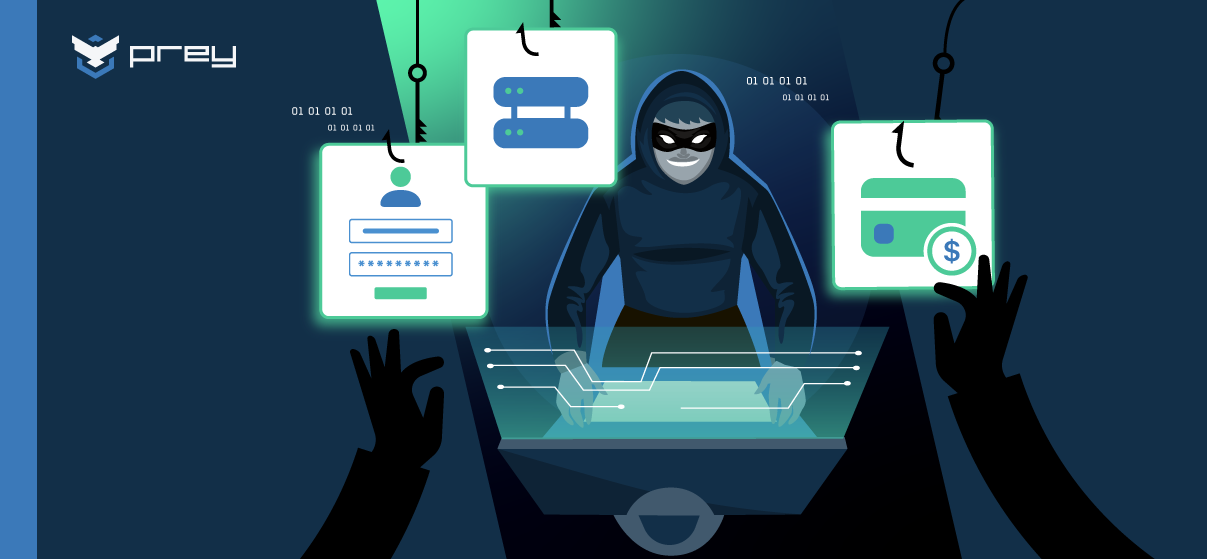They don’t break in—they log in. That’s the mantra of today’s cybercriminals, who rely on stolen credentials to sidestep even the best technical defenses.
The result? A booming underground economy where access brokers are the new power players, flipping hacked logins like stock traders on a bullish day. This shift is transforming credential theft from a scattered tactic into a full-blown supply chain.
Understanding access brokers
Access brokers are not your typical threat actors. They don’t focus on exfiltrating data or deploying ransomware themselves—instead, they specialize in what’s arguably more foundational: access. These individuals or organized groups act as credential harvesters wholesalers, sourcing and curating logins that serve as the starting point for countless cyberattacks. Their role sits at the intersection of reconnaissance and enablement.
What differentiates an access broker from a general-purpose hacker is their supply-chain mindset. They’re not interested in single-use credentials; they want scalable, repeatable access with clear resale value. Many regularly engage with phishing scam orchestrators, stealer malware operators, and even initial access brokers who breach systems at scale and offload credentials in bulk. Once the credentials are in hand, most often stemming from a data breach, the broker validates them, categorizes them by type and privilege level, and distributes them in curated, highly specific marketplaces.
They’re particularly valuable to ransomware crews, data extortionists, and corporate espionage units. Why burn time on network discovery when you can pay for a tested login that drops you straight into the heart of an enterprise environment?
Credential types and market demand
There’s a hierarchy in the credential black market—one shaped by utility, rarity, and potential for exploitation. Low-privilege user logins still sell, but they’re often used for enumeration or initial footholds. The real demand, and the real money, lies in high-privilege or sector-specific access.
- Corporate credentials are hot commodities. A working VPN login into a medium-sized SaaS firm might sell for a few hundred dollars. Add admin rights or internal application access, and that number multiplies quickly.
- Financial accounts offer immediate monetization paths. Credentials to online banking, fintech wallets, or high-limit business accounts can be sold to fraud rings capable of laundering funds within hours.
- Administrative privileges are the crown jewels. Think root access to cloud dashboards, domain admin rights, or control panels for critical infrastructure. These credentials don’t just enable data theft—they enable full-blown operational sabotage.
Likewise, Brokers will often tailor their credential inventory based on market shifts. If a ransomware group is actively targeting law firms, brokers will surface credentials tied to legal SaaS platforms, document repositories, and e-discovery tools. Demand is shaped not only by access level but by the strategic value of the target industry.
The marketplace dynamics
These aren’t chaotic free-for-alls. The ecosystems where access brokers operate are tightly controlled, reputation-driven communities that mirror traditional supply-and-demand economics. I’m mainly talking about CIS-based forums like Exploit and XSS, alongside curated Telegram channels and dark web storefronts, host broker listings complete with uptime guarantees, credential metadata, and even user reviews.
Prices vary not just by the access type, but by the threat actor’s endgame. A login into a fintech startup might fetch a few hundred dollars. But if the broker can demonstrate internal financial dashboard access or employee inbox control, the price can spike into the thousands. Brokers selling cloud or Active Directory access to Fortune 100 companies can command five-figure payouts, especially if the credentials bypass MFA or come with tokenized session cookies.
And like any digital market, there’s innovation. Brokers now offer tiered pricing, subscription bundles for access feeds, and post-purchase support. Also, escrow services and trusted middlemen ensure transactions are smooth, while some elite brokers operate their own private shops, complete with search filters and automated delivery systems.
The commodification of access has made credential sales indistinguishable from SaaS. The friction is gone, the interfaces are sleek, the criminal ROI is undeniable, and we have yet another cyber threat that’s in a state of growth.
Methods used by access brokers
Credential harvesting techniques
Access brokers have diverse sourcing pipelines. Some use custom phishing kits, tailored to mimic login portals from banks, enterprise software, or cloud services. These kits are often paired with targeted email campaigns that leverage urgency or familiarity—think HR requests, invoice notices, or IT support alerts.
Credential stuffing remains a core tactic. Brokers tap into old breach dumps and deploy automated scripts to test credentials against hundreds of platforms, harvesting those that still work. This method is particularly effective in industries where password reuse is rampant and security hygiene lags.
Then there’s malware—info-stealer strains like RedLine and Vidar are being deployed via trojanized software, shady download links, or malvertising. These tools vacuum up saved logins, browser sessions, and application tokens, often uploading them to centralized command-and-control servers. Brokers either run these operations themselves or buy access logs from operators, which they sort, test, and monetize.
They’ll also scrape exposed assets online. GitHub repos with hardcoded credentials, misconfigured S3 buckets, or unsecured Jenkins dashboards can all yield valuable access.
Credential verification and quality assurance
Brokers who don’t vet get buried. In a cutthroat ecosystem where feedback and ratings dictate trust, verifying credential quality is essential. Many use semi-automated tools to validate logins, check access privileges, and confirm session persistence.
For high-value credentials, brokers may login manually, take screenshots, or compile proof-of-access reports. Credentials gated by MFA aren’t necessarily discarded—some brokers offer playbooks for social engineering MFA bypasses, or they’ll flag the credential as requiring SIM swap coordination.
Reputation management is real. Top-tier brokers offer SLAs, response windows, and even credential replacement policies. The goal is to become a go-to supplier for ransomware gangs, nation-state actors, or fraud networks looking to minimize risk in their supply chain.
Impact on cybersecurity and business operations
Increased risk of cyberattacks
Access brokers drastically reduce the barrier to entry for cybercrime. What once required months of reconnaissance and exploit development now takes minutes on a dark web shop. A motivated attacker with a budget can leapfrog initial access, lateral movement, and privilege escalation entirely.
This leads to shorter attack timelines, more devastating breaches, and far less opportunity for defenders to intervene. The prevalence of access brokers is a key driver behind the rise in multi-stage ransomware, extortion, and business email compromise campaigns.
Worse, access often goes unnoticed and there’s no sign of zero trust in sight. Unlike malware that triggers alerts, login-based breaches can blend into normal network activity, allowing attackers to dwell undetected for weeks or months.
Financial and reputational consequences
Credential-based intrusions often go straight for high-value targets: finance, HR, legal, and executive systems. Once inside, attackers exfiltrate sensitive documents, siphon funds, or use internal communication tools to launch further attacks.
The financial toll includes direct theft, forensic costs, incident response, legal action, and regulatory penalties. Laws like GDPR and CCPA impose strict reporting and remediation requirements. And if it’s found that the organization lacked basic controls—like MFA or password rotation—fines can be severe.
But financial loss is often dwarfed by brand damage. Public breaches erode customer confidence, shake investor trust, and attract unwanted media attention. In markets where trust is currency, even a single credential leak can cause irreversible harm.

Mitigation strategies and best practices
Enhancing credential security
No silver bullet exists, but hardening identity infrastructure is non-negotiable. Multi-factor authentication should be mandatory across all applications, including legacy and third-party tools. SSO reduces surface area, while conditional access policies prevent logins from suspicious regions or devices.
Use enterprise-grade password managers to enforce uniqueness and complexity. Regularly rotate privileged credentials, especially for shared accounts and third-party vendors. Implement just-in-time access controls to limit exposure windows and bolster your data security.
Likewise, credential audits should be baked into operational routines—not just after incidents. Look for stale accounts, weak passwords, and permissions creep, and remediate accordingly.
Monitoring and detection approaches
User and Entity Behavior Analytics (UEBA) is key. Baseline what normal looks like, and flag deviations aggressively. This includes login velocity anomalies, device fingerprint mismatches, and time zone inconsistencies.
Most importantly, deploy dark web monitoring tools to catch compromised credentials before they’re used. Pair this with threat intelligence feeds that track broker listings, stealer logs, and credential dump forums.
Integrate EDR with SIEM to close the loop. You want visibility across endpoints, users, and network traffic, stitched together by correlation rules that can surface early-stage access attempts.
Incident response planning
Credential compromise demands rapid containment. Prebuild IR workflows around identity threats: auto-disable compromised accounts, force credential resets, and investigate lateral movement.
Another good approach is to engage red teams to simulate broker-based attacks. Can your defenses spot a login from a foreign IP mimicking a legitimate user? Do your logs surface privilege escalations tied to dormant accounts?
Executive and legal teams must be looped in early. Messaging during access-based breaches is delicate—especially if client data, financial systems, or privileged emails are exposed.
Employee training and awareness
Security culture starts with clarity. Employees should understand that login credentials are access keys to the entire business. Train them to spot phishing, resist MFA fatigue prompts, and report anomalies.
Gamify phishing simulations and publicly reward vigilant behavior. The key here is to make security everyone’s job, not just the IT department’s burden.
Use breach case studies to drive the point home. Real-world stories stick more than policy PDFs ever will.
Conclusion
Access brokers are reshaping the cybercriminal economy. Their rise means that credential theft is no longer a scattered crime of opportunity but a structured, scalable business. Organizations need to respond with equally structured defense strategies: better authentication, smarter monitoring, and company-wide awareness. Because in a world where logins are currency, protecting credentials is protecting your business.






